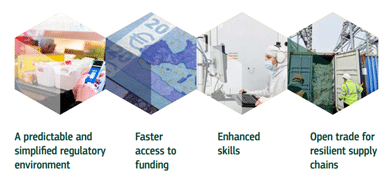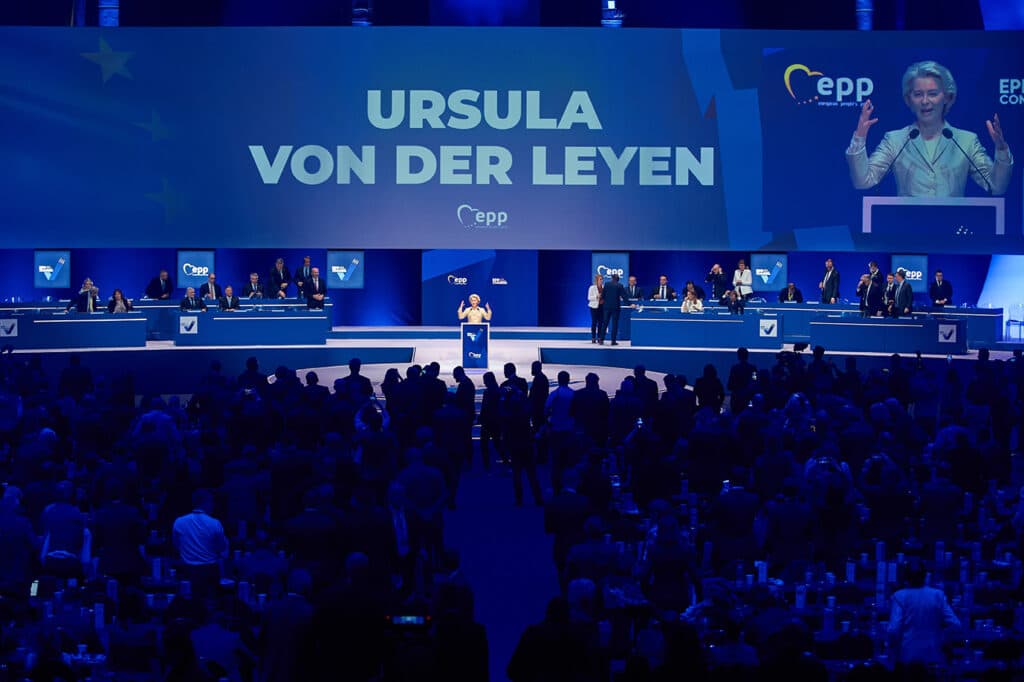Priorities of the next European Commission: a new Deal for EU competitiveness in achieving net zero
On 18 July 2024, Ursula von der Leyen was elected President of the European Commission (EC) for the second time. With 401 votes in favor out of 707, a 41-vote lead, she starts her new mandate with stronger parliamentary support compared to 2019, when she was appointed with 9 extra votes. Before the formal ballot, she delivered a speech in front of the European Parliament (EP), addressing key EU policy areas and unveiling the priorities of the Commission she will lead.
A new Clean Industrial Deal
The focus areas of the speech diverged from those of 2019, when she addressed the EP presenting the net zero by 2050 target and the European Green Deal (EGD) Plan. This time, she did not open her remarks with specific policies, but with two priorities: prosperity and competitiveness. According to von der Leyen, these two dimensions translate into a pragmatic, technology-neutral and innovative approach to pre-established EGD targets. In fact, on the one hand, climate ambition has not been tempered, she affirmed: “We will stay the course on our new growth strategy and the goals we set for 2030 and 2050”. On the other hand, the compelling need to boost implementation and investments to make the targets happen on the ground brought the President to announce a new Clean Industrial Deal to be proposed in the first 100 days of work. The plan would serve the purpose of channeling “investment in infrastructure and industry, in particular for energy-intensive sectors. This will help create lead markets in everything from clean steel to clean tech and it will speed up planning, tendering, and permitting. […] The new Clean Industrial Deal will also help bring down energy bills” by virtue of homegrown cheap renewables.
Building on the Green Deal Industrial Plan and other EU legislation and strategies
A change of pace was expected as a consequence of the economic disruptions caused by the Covid-19 pandemic and the 2022 energy crisis and the rising concerns on the impacts of green policies on the competitiveness of EU industry, which led, already in 2023, to the proposal of the Green Deal Industrial Plan. The three initiatives under it are: the Critical Raw Materials Act (CRMA), the Net Zero Industry Act (NZIA) and the reform of the electricity market design (EMD), all already in force.
It is exactly the interaction between the new Clean Industrial Deal and the Green Deal Industrial Plan that will be interesting to map. The Green Deal Industrial Plan was proposed to enhance the competitiveness of Europe’s net-zero industry and to accelerate the transition to climate neutrality by creating a more supportive environment for scaling up EU’s manufacturing capacity for the net-zero technologies and products required to meet EU climate targets.

The Clean Industrial Deal seems to mirror these objectives. To what extent will it build upon the former Plan? Will targets already in place be strengthened or softened? For example, the CRMA identifies Strategic Raw Materials based on their economic importance and supply risk, setting domestic production objectives, for 2030, of 10% for extraction, 20% for processing and 25% for recycling capacity. Nevertheless, such targets are non-binding, they are referred to as “benchmarks” in the legislation. Will the Clean Industrial Deal amend them or will it make them binding?
Certainly, the new Plan will also need to align with other pieces of EU legislation intervening on the same issues, among which, the amended Renewable Energy Directive (REDDIII) and the EU Industrial Carbon Management Strategy. Concerning the former, the new Plan will have to enable the recently increased target of 42.5% of renewable energy by 2030 by effectively supporting clean energy technologies supply chains and carefully assess permitting needs for the extraction of critical materials to produce their key components. On the latter, which identified different stages for developing industrial carbon capture, utilization and storage (CCUS) management in Europe, we will witness to which degree it will complement the efforts towards 90% greenhouse gas emissions reduction by 2040 and if its role will be expanded.
Conclusions
We welcome the reelection of Ursula von der Leyen as the President of the European Commission and look forward to engaging with the development of Green Deal Industrial Plan into a new Clean Industrial Deal.
Relevant links
EU Green Deal Technical Report 2022
The Green Deal Industrial Plan
A summary of the proposal for a reform of the EU electricity market
Electricity market reform: what is (not) in the European Commission proposal






